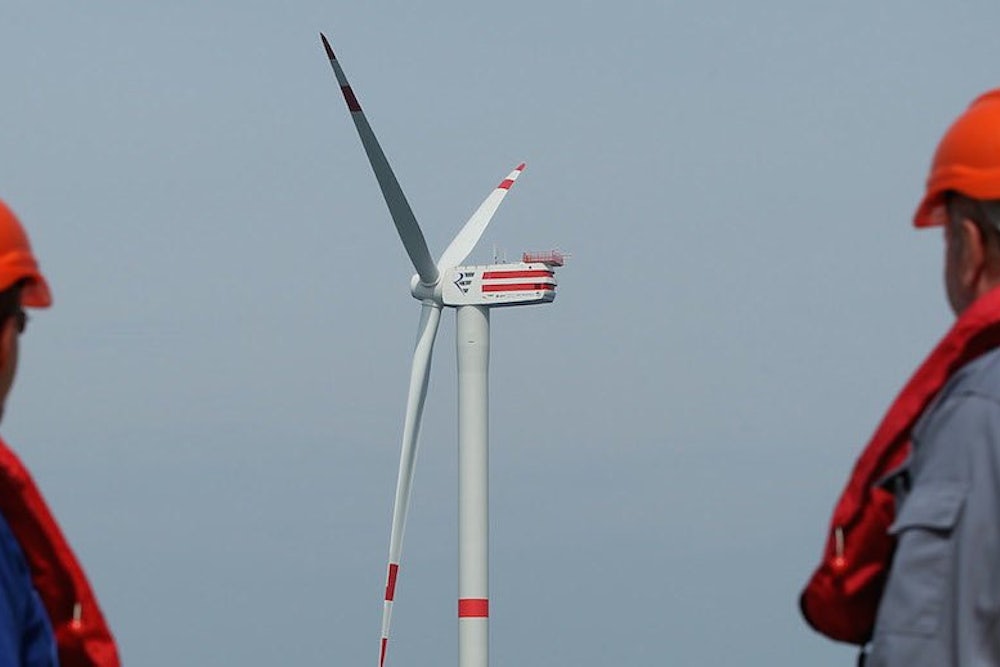European countries long ago decided to take the long-term view of clean energy. Denmark put up its first wind turbine offshore 24 years ago, in 1991; today, Europe has at least 70 complete wind farms and 2,300 turbines in its waters. The United States is just getting started on catching up to its transatlantic neighbors: by July, Deepwater Wind will have steel in the ground for the first offshore wind farm off of Rhode Island. If all goes according to plan, the Block Island wind farm will begin generating power by fall 2016.
In the U.K., though, wind subsidies are now at risk after the Tories won Britain’s recent elections, sweeping in a new wave of austerity government. (Support for wind and solar development there has historically been stable, however, compared to the U.S.) Just 3 percent of the world’s wind power is based offshore, and the United Kingdom is the leader: They generate half of global offshore wind energy.
In the U.S., conservatives like to propose funding only for research, which doesn’t help businesses take the leap into entry—the nascent energy source is still several times more expensive to produce than conventional fuels, like oil and gas, that have benefited from over a century of government subsidies.
The industry requires some taxpayer help to overcome the initial costly barrier to entry and absurd logistics in the U.S. market. For example, the U.S. lacks specialized 500-foot ships to carry steel for wind turbines, so supplies and ships must come from Europe. Potential developers have had to work around an obscure trade law that doesn’t let foreign ships that intend to install wind power sail into U.S. ports (in-depth explanation here).
Onshore, the U.S. wind industry is growing faster than any other electricity source, thanks precisely to this kind of investment. The main wind subsidy is the wind production tax credit, which provides 2.3 cents per kilowatt-hour for the first ten years of production. But Republican infighting over the tax credit (some, like Iowa Sen. Chuck Grassley support it, while plenty others don't) means that it is regularly endangered. Some of that opposition is fueled by fossil fuel trade groups, which have aggressively lobbied against the credit (including the Koch-backed American Energy Alliance). The tax credit expired at the end of 2014; already, wind industry manufacturers scale back their plans when they face uncertainty. It’s a vicious cycle.
Deepwater Wind's Block Island wind farm is both a less ambitious and less controversial version of another proposed project, the 130-turbine Cape Wind, that’s now sidelined indefinitely because of its biggest critic—the billionaire Bill Koch. In essence, his argument was “not in my backyard.” Koch called the proposed plant “visual pollution” and worried it would hurt his “ability to acquire a special property where I can create a family compound for my children.” The project never gained local support, and, in January, the developer dropped its contracts.
On the other hand, Deepwater Wind will have five turbines spinning 18 miles off the coast of Rhode Island, intended to power 17,000 homes. This one stands a much better chance of survival than Cape Wind. Let's hope it's successful.
